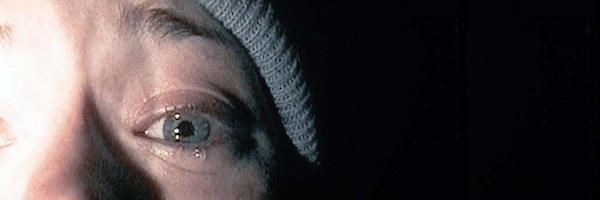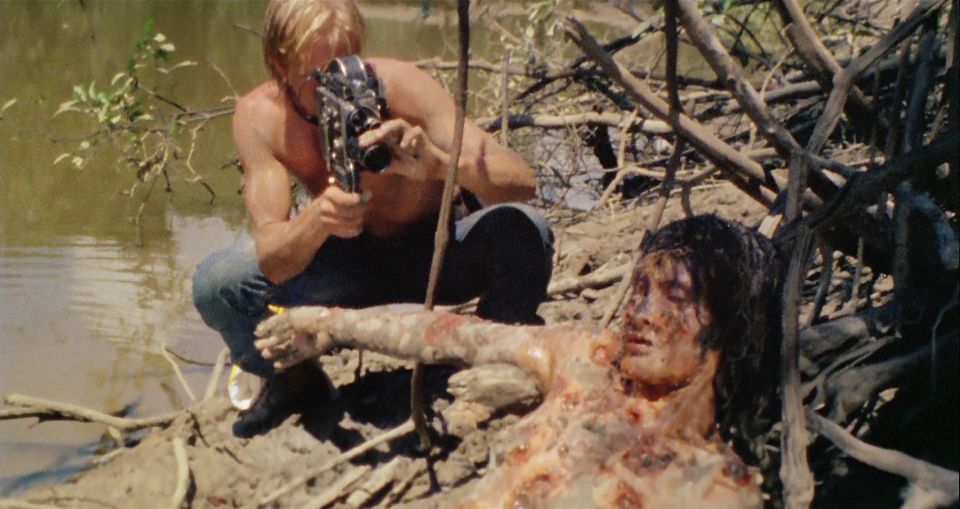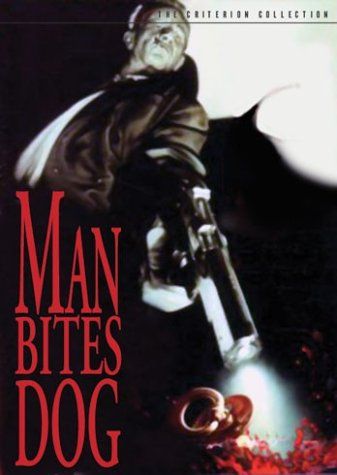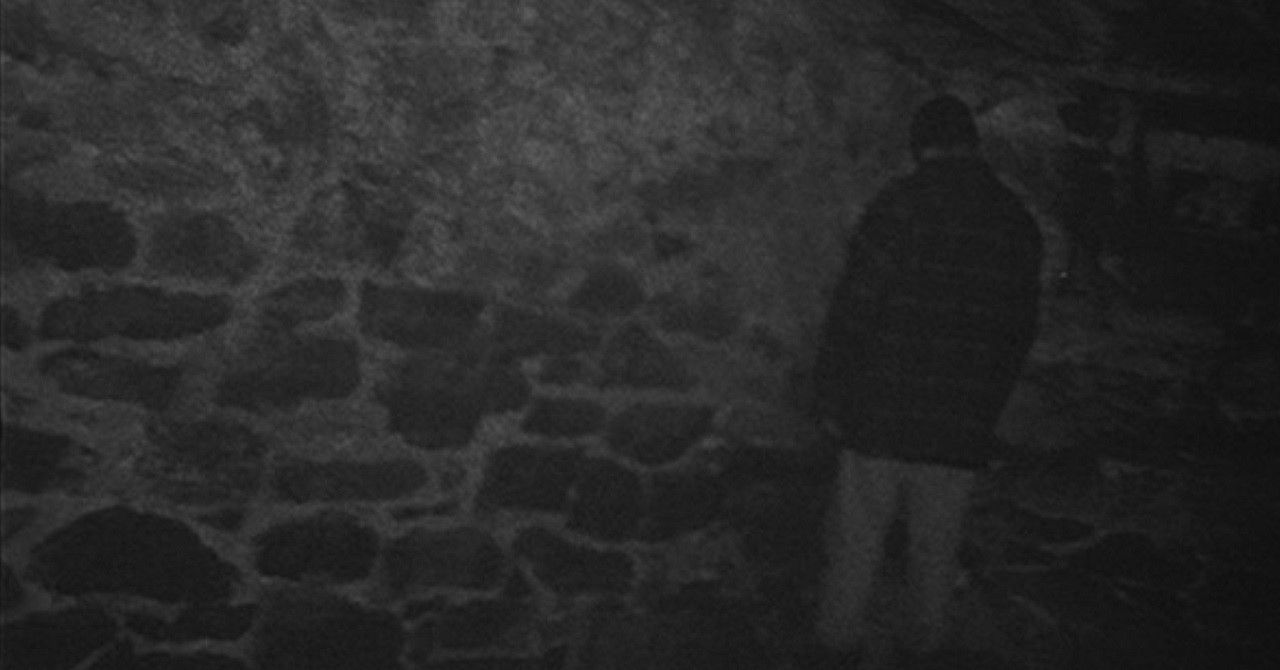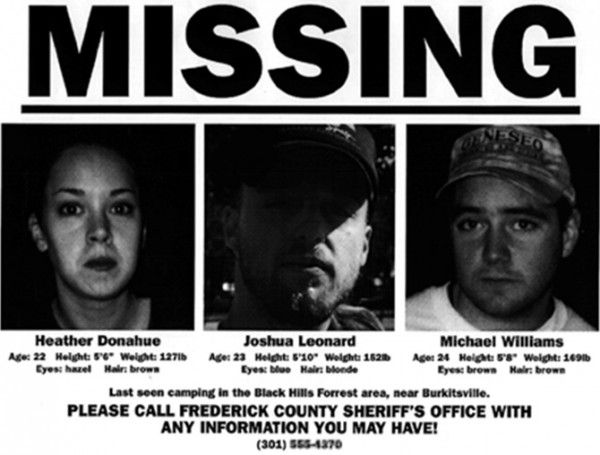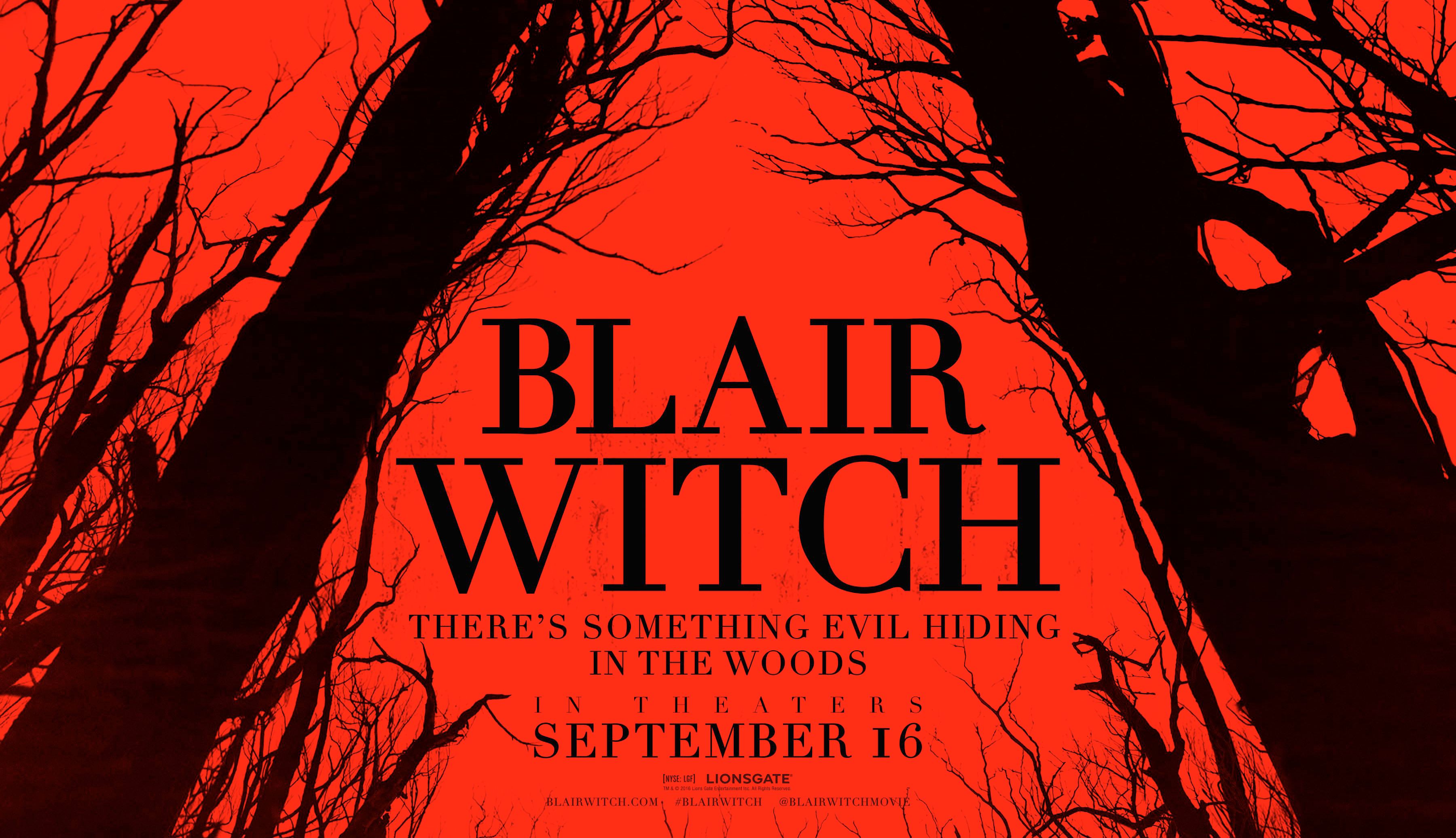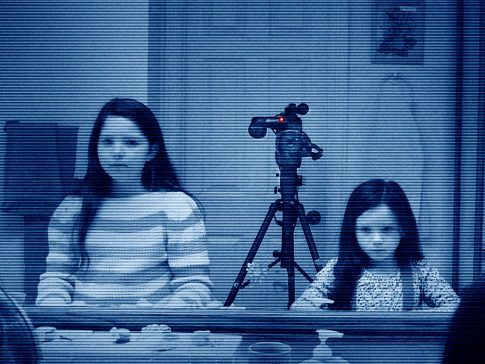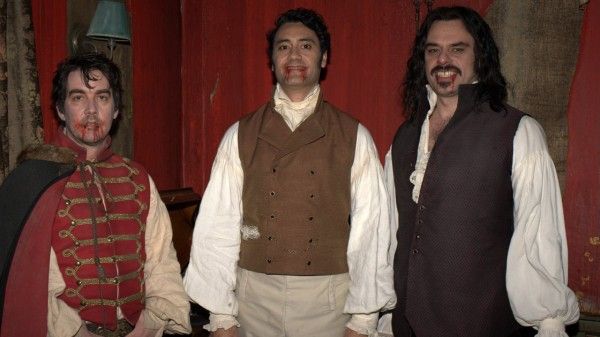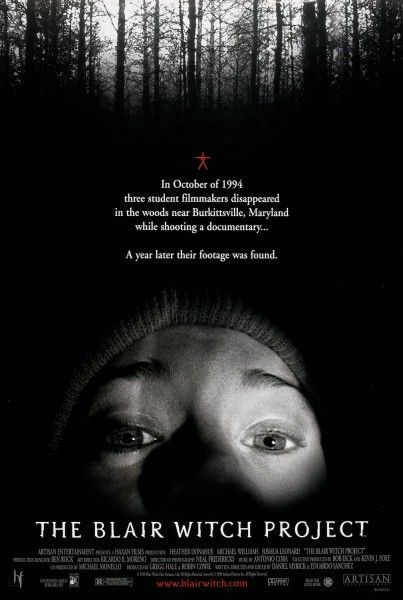It was the summer of 1999. Fears of Y2K had yet to fully manifest themselves, though Hollywood was still finding success with world-ending pictures like the previous year's Armageddon and Deep Impact. The traditional-yet-twisty smash horror hit The Sixth Sense had yet to debut and the equally mind-bending sci-fi film The Matrix was already changing the future of the cinematic landscape thanks to its incredible bullet-time sequences. But another film--one that was cobbled together on an unbelievably low budget, incorporated the technique of using "found footage" (something previously seen only in cult films) and developed a brilliant word-of-mouth marketing campaign--would have far-reaching effects on the cinematic world that would outlast any of the other fads of 1999.
The Blair Witch Project certainly didn’t invent the found-footage genre of filmmaking, just as its infectious and rapidly spreading marketing campaign was not entirely novel. But what The Blair Witch Project did better than any film that came before it, and arguably any that have come since, was bring the found-footage horror genre into the mainstream by combining low-budget, guerilla-style filmmaking with an irresistible hook that audiences were more than happy to gossip about. Once word spread that “actual recorded evidence” of a ghostly urban legend had been recovered and was being played in theaters nationwide, this thing took off like dry kindling in a campfire. Echoes of The Blair Witch Project have been reverberating ever since with many copycat films falling short, some finding commercial success, and others pushing the very boundaries of the genre and filmmaking itself. We take a look at some of them below.
History of Found Footage
In order to understand the impact The Blair Witch Project had at the time of its release and continues to have almost 20 years later, it's important to understand where the "found footage" genre was in its infancy. It actually has its roots in literature, as most contemporary film genres do, specifically in classic epistolary horror tales like those depicting the famous monsters of Bram Stoker, Mary Shelley, and H.P. Lovecraft. Those stories were the earliest examples of "viral hits" thanks to their shocking, must-read subject matter and the inclusion of "real" documents that made the experience all the more believable and terrifying. Over the years, this storytelling technique made its way into cinema.
Cannibal Holocaust, the 1980 cult film from director Ruggero Deodato, is widely considered as the progenitor of the genre. (Now I don't actually recommend watching it if you're the least bit squeamish or, understandably, are against animal cruelty.) The film itself, often banned or at least heavily censored due to its brutality, centered on an anthropologist traveling to the Amazon rain forest in search of a missing documentary filmmaking crew; he finds their shocking footage in the process. So despite the rather mockumentary style of camerawork used in the film itself, the inclusion of actual found footage in the plot birthed an entirely new sub-genre.
Other early examples of found-footage films occured over the next two decades, like the 1989 video U.F.O. Abduction that captured an extraterrestrial abduction on camera, which presented the recording as recovered footage. In the same year there was the mockumentary war film 84C MoPic that saw audiences following along with a combat cameraman. In 1992, the Belgian black comedy Man Bites Dog, written, produced and directed by Rémy Belvaux, André Bonzel and Benoît Poelvoorde, combined the mockumentary style with the slasher/serial killer genre. A filmmaking crew followed a burgeoning serial killer in order to document his crimes, but ended up participating in those crimes themselves. It's a biting satire that explored our detachment to violence when filmed through a lens, but failed to capitalize on the found-footage aspect.
Forgotten Silver, however, an ironically forgotten early installment in Peter Jackson's filmography, played up the found-footage idea as a comedy, in the vein of Christopher Guest's iconic mockumentaries. Co-written and co-directed with Costa Botes, Jackson himself claims to have found the lost films of forgotten (and fictional) New Zealand filmmaker Colin McKenzie in an old shed. What follows is an exploration of McKenzie's astounding filmmaking conventions which he invented many years earlier than history has allowed. The found films in question were actually created by Jackson himself, made complete with deadpan comedy and commentary from Jackson's fellows who are in on the joke.
Earlier in 1999 came Joel Schumacher's tough-to-watch drama 8mm that incorporated found-footage elements at the center of its snuff film plot, though this was a more traditional studio production. However, in 1998, two movies similar to The Blair Witch Project had sprung up: Alien Abduction: Incident in Lake County, another alien-invasion film that captured a "real" abduction on tape, and The Last Broadcast, a horror film that attempted to use found footage to recreate the trip of a group of documentary filmmakers who were murdered in the Pine Barrens of New Jersey while searching for the Jersey Devil. This latter film, reportedly made on a budget of only $900, made around $4 million at the time. Quite impressive, but nowhere near the success that The Blair Witch Project would achieve, thanks to a perfect storm of low-budget filmmaking, clever marketing, and an irresistible hook.
Impact of 'The Blair Witch Project'
As we just discussed, The Blair Witch Project was neither the first movie to incorporate found footage as a plot point, nor was it the only movie of its type to land a sizable box office on a shoestring budget. Though the actual final budget, all told, was quite a bit larger than some of the aforementioned films (estimated at $500,000 to $750,000 after an initial investment by Daniel Myrick, Eduardo Sánchez and Gregg Hale that was about a tenth of that), the nearly $250 million worldwide total remains the highest box office tally ever for a found-footage film. Being a found-footage film was not enough for the wild success on its own, and the modest budget was not necessarily an outlier, so the film's perfect storm of performance was completed thanks to brilliant, guerrilla marketing.
The reason behind this super-effective marketing was also a combination of elements that worked in favor of The Blair Witch Project's success. First, the Internet had been around just long enough that people were starting to comfortable both trusting it as a source of legitimate information and using it as a powerfully expansive and inexpensive marketing tool. Probably the first widely released film that owed a majority of its exposure to an internet marketing campaign, The Blair Witch Project also had another thing going for it: a solid hook of a believable urban legend and the claim that "must-see" evidence of this paranormal entity existed, a claim backed by a wealth of generated propaganda like police reports, missing persons flyers, newsreel interviews, and in-person confirmation that the events of the film were, in fact, real. And when audiences were done viewing the film, they still weren't sure what was real and what wasn't, leading to continued conversations long after the credits rolled.
Though people soon learned the hard lesson that just because you read it on the Internet doesn't mean it's real, the damage had already been done. Word spread out of Sundance 1999 like wildfire, reaching to all the equally sunny and shadowy corners that Internet itself was designed to touch and influence. Not since Orson Welles' War of the Worlds radio broadcast had gossip, curiosity, and a strange sense of disbelief mixed with a morbid curiosity so pervaded the populace. Word of mouth is a powerful thing, whether its spreading panic in the 1930s or pre-apocalyptic excitement and anxiety in the late 1990s. But "word of mouth" wouldn't do as a term to describe the phenomenon that was The Blair Witch Project in 1999; instead, the film is considered now to be the first that "went viral," a phrasing more befitting the "extreme" vogue of the day and the film's epidemic-like sweep across the nation and the world. Little did critics, fans, or the filmmakers themselves known that The Blair Witch Project had thrown wide the flood gates on an array of cinematic sub-genres that continue to be explored to this day.
Legacy of 'The Blair Witch Project'
One measure of a film's success is in how much money it makes during its box office and home video run; The Blair Witch Project is clearly a winner on this account. The inevitable sequel came in 2000's Book of Shadows: Blair Witch 2 but the franchise's inability to bottle lightning a second time disappointed critics and crippled plans for a third film. However, 2016 saw director Adam Wingard and screenwriter Simon Barrett developing a horror/thriller by the name of The Woods, which was revealed to be a Blair Witch sequel, to everyone's surprise and delight. It stars James Allen McCune as the brother of the original film's Heather Donahue, and is playing in theaters now.
Another measure of success is critical reception; The Blair Witch Project stands at 86% on Rotten Tomatoes and has a score of 81 on Metacritic; not too shabby for an indie horror film. The film even earned itself enough street cred that a spoof movie--the truly scary (for how bad it is) The Bogus Witch Project--was produced in order to capitalize on its success and perhaps knock it down a peg.
But, for my money, the best measure of success is just how impactful the unique aspects of a film have been on the rest of the filmmaking industry, and how long those effects last. Though often imitated within the horror genre, some efforts have hit closer to the mark made by The Blair Witch Project than others. The Paranormal Activity franchise, the first three films of which hold the next three spots on the best-ever found-footage box office list after The Blair Witch Project, has clearly found a loyal audience base, even if the gimmick of questionable found footage had worn off 10 years after the 1999 film broke the mold. Horror anthology franchise V/H/S built its entire premise around the idea of found footage: a group of burglars break into a house and find some disturbing VHS tapes that have some horrifying vignettes recorded on them. Zombie epidemics got in on the fun in a terrifying way with the 2007 Spanish film [REC], which spawned three sequels and an American remake titled Quarantine. A lesser version of the same idea followed from the granddaddy of the zombie genre George Romero in the same year's Diary of the Dead, though it's not his best effort.
If it's J-Horror/Asian horror cinema you're after, then investigate the documents of demonic activity in Kôji Shiraishi's 2005 film, Noroi: The Curse. Last year saw a meta attempt at found-footage storytelling in The Gallows, working a re-enactment of a doomed theatrical play into the plot. And this year's Found Footage 3D put an extra meta spin on things when a group of filmmakers find that their fictional evil is starting to manifest itself in their behind-the-scenes footage.
If The Blair Witch Project was merely cited as the source of any number of found-footage horror movies, that would be a welcome honor, as far as I'm concerned. But its effects go even further. It's a rare filmmaking technique and strategy that finds its way into multiple, disparate genres, but that's exactly what found footage has done thanks to The Blair Witch Project. J.J. Abrams, Drew Goddard, and Matt Reeves famously collaborated on the sci-fi/monster-movie take on the sub-genre in 2008's super-secretive and mysterious Cloverfield. Also in the sci-fi vein, there's the time-traveling thriller Project Almanac, the family-friendly film Earth to Echo, the outer space-based Europa Report, and the career-launching superhero spin, Chronicle.
Found footage even reached into the fantasy realm with the delightful 2010 picture Trollhunter, not to mention raunchy teen comedy in Project X, action/dramas like David Ayer's End of Watch and Steven Quale's tornado-chasing Into the Storm, horror/comedies like the decidedly more mockumentary-style What We Do in the Shadows, and straight-up comedies like the 2014 French film Babysitting.
But perhaps my favorite example of found footage being used creatively in a film was the overlooked 2003 Alan Parker drama, The Life of David Gale. The crux of that story is that the titular character, played expertly by Kevin Spacey, is an outspoken opponent of capital punishment (ie the death penalty) who is accused of murdering his fellow activist (Laura Linney). Audiences learn of Gale's story, and the manner in which he ended up on Death Row, through his interviews with journalist Bitsey Bloom (Kate Winslet). Through her own investigations, Bloom peels back the truth layer by layer, thanks to a sequence of video recordings that captured the actual murder itself. But far from being used to document paranormal happenings, the evidence could be used to either exonerate or convict Gale himself. I'll leave it to you to see how it all ends up, but it suffices to say that it's one of the most clever uses of found footage in a realistic, dramatic movie to date.
Surely not every movie included above owes allegiance to The Blair Witch Project or cites the film as its source of inspiration, but the film's continuing legacy is impossible to ignore. Films that seek to replicate the perfect storm of its debut are common, while others simply seek to work the found footage aspect into a plot as a gimmick, but the ones that attempt to further the genre or create a new niche entirely are quite rare. So no matter what the reasoning is behind the inclusion of found footage, it all comes down to the inescapable, prevalent nature of the genre in our modern cinematic culture. And to think that this all started with the unexpected success of a little movie known as The Blair Witch Project.
For related stories, be sure to check out the following links:
- The Top 10 Found Footage Films, Ranked
- The Fascinating, Preposterous Ruins of ‘Book of Shadows: Blair Witch 2’
- ‘Blair Witch’ Review: Now with Bigger, More Menacing Stick Figures | TIFF 2016
- Exclusive: New ‘Blair Witch’ Trailer Will Trap You Underground and Leave You For Dead
- Surprise! Adam Wingard’s ‘The Woods’ Is a ‘Blair Witch’ Sequel; Watch the Trailer

